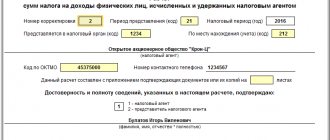Types of declarations:
- VAT return;
- tax return: income tax;
- personal income tax;
- transport tax;
- tax return: property tax;
- land tax;
- water tax;
- excise tax;
- mineral extraction tax (MET);
- tax return under the Unified Agricultural Tax (unified agricultural tax);
- imputed income (UTII).
Declarations are submitted for tax and reporting periods within the time limits established by the Tax Code.
https://youtu.be/ALPWIby0oaA
Method of sending and submitting the tax return, as well as the information indicated in it
The provisions of the Tax Code of the Russian Federation provide for two legal and legitimate methods for submitting unified reporting to the Federal Tax Service. The most common is a personal visit to the Federal Tax Service office, where you can submit all the necessary documents and explanations confirming the fulfillment of tax obligations by the taxpayer.
All types of tax returns can be submitted in this way, this also includes an income tax return, which can be submitted in person or through an agent.
The method of transmitting the declaration via electronic sending is considered less time-consuming. This filing procedure does not require any additional steps and can be completed by any authorized person, including an agent.
The provisions of the Tax Code of the Russian Federation establish a certain procedure for filling out a tax return, as well as additional requirements, features and explanations for its content. Taxation documents and tax reporting of an individual or individual entrepreneur must contain the following specified supporting information and sections:
- data and explanations about the document itself - its name and type;
- information about the tax authority - its name, location and other specified data;
- information about an individual or organization that is a taxpayer;
- contact information where you can contact the taxpayer;
- features relating to the procedure for providing and submitting an electronic or written declaration - its return, fine, amount, liability, etc.;
- features of the procedure for fulfilling the requirement for payment of the declaration payment, its verification, amount, return, sections, etc.;
- features of submitting a declaration of a consolidated group of taxpayers to the Federal Tax Service, their responsibility, verification, total amount, refund, fine, if any.
Tax return according to the simplified tax system (KND-1151085)
Individual entrepreneurs are required to submit a tax return to the State Tax Inspectorate for the past calendar year with a deadline of April 30. For a certain period (for example, a quarter, half a year), reports are submitted by the 20th of the next month.
A tax return under the simplified system contains information: full name (including tax identification number) of the entrepreneur or name of the organization; taxable period; tax rate; OKVED code; OKATO; budget classification code (KBK); amount of insurance premiums. Provided by the State Tax Inspectorate in a single copy.
A simplified zero tax return, if there was no cash flow in the reporting period, is filled out as follows: title page; lines 001, 010, 020, 201; the rest is dashes. Rented quarterly.
Tax return for the sale of a car
The amount that the owner receives from the sale of a car is one of the components of income for individuals. Provided that documents on the initial acquisition of property are preserved, this amount can be deducted from the income received. You must pay tax on the balance according to the rate. Documents confirming the purchase may be: receipts; cash receipt orders; receipts for depositing cash into the bank into the seller’s account; a receipt confirming receipt of funds by the seller. A purchase and sale agreement, if it does not indicate the purchase amount, is not such a document.
It is important to know and comply with the laws and rules of civilized business: “Deadline for filing the 3rd personal income tax declaration”?: https://russtartups.ru/buhgalteriya-2/srok-podachi-deklaratsii-3-ndfl.html
Tax return when purchasing an apartment
Housing can be purchased either at once or through lending from financial institutions. In such cases, a loan and mortgage agreement is concluded.
The mortgage tax return contains the following information:
- passport and TIN of the owner,
- certificate 2-NDFL about income, including wages,
- contract of sale of an apartment,
- certificate for real estate on the secondary market,
- share participation agreement,
- acceptance certificate from the developer for real estate in a new building,
- seller's receipt or document confirming payment.
The tax office issues tax deductions in accordance with the following documents: payment slips confirming payment of expenses, including receipts for receipt orders; seller's receipt; bank statements on mortgage repayments; acts of purchase of materials and sales receipts; loan agreement.
How to fill out the certificate, instructions
Let's take a quick look at how the submitted certificate is filled out.
How to fill out the certificate
Stage No. 1 – title page
This part of the form contains basic information about the reporting employee, namely:
- surname, first name, patronymic in full spelling, without abbreviations;
- last name, first name, patronymic of a spouse or child, if the data is filled out for him;
- date of birth of the person about whom information is provided, rewritten as in the main document of a Russian citizen;
- government organization-employer of the employee, without abbreviations;
- the position that the employee is filling at this stage;
- country, locality, street, house and apartment at the employee’s place of residence;
- zip code for postal items related to the employee’s residential address.
- registration is temporary, if such exists.
Stage No. 2 – section one
This section involves recording all income received by the family that occurred during the reporting period. These include:
- money earned at the established place of work, information about the amount of which is taken from the accounting department of the civil service, from certificate 2-NDFL ;
- earned through activities of a scientific or pedagogical nature, which were carried out officially, in accordance with the agreements established with the employing organization;
- money earned as a result of creative work, for example, writing and publishing a collection of poems, creating sculptures, paintings and similar objects of art;
- government grants supporting cultural, educational and scientific activities;
- interest on deposits made by an employee in banks;
- dividends of a member of third-party organizations;
- money on securities;
- pension;
- surcharges of various kinds;
- cash benefits for specific categories of citizens, for example, women on maternity leave;
- family capital;
- alimony,
- scholarships.
- housing subsidies;
- apartment rent;
- money for the sale of one’s own movable or immovable property;
- inheritance received from a deceased relative;
- insurance payments;
- money given at work to go on a business trip;
- other receipts of funds.
Stage No. 3 – second part of the form
The purchase information is entered inside this part:
- cars;
- housing of any format;
- valuable documents.
In this case, purchases must cost the employee more than the money he earned over the last three years.
Let's look at an example. Margarita Petrovna Chestnaya bought a cottage for her family in 2020. However, the cost of the long-awaited purchase exceeded the funds she earned over the previous 36 months, that is:
- year 2014;
- 2015;
- 2016.
Since this happened, Margarita Petrovna must indicate in the second part of the declaration the amount of the purchase, and at the same time the source of additional funds, which in this case was the inheritance received from her deceased beloved uncle, the amount of which was included in the first section.
For each piece of real estate, the following indications are entered:
- location address;
- full area.
For a vehicle, such as a car or motorcycle, write:
- brand;
- model;
- other comprehensive characteristics that allow you to judge the price and other parameters of transport.
As for valuable documents, you need to write about them:
- species affiliation;
- legal entity that is responsible for their release.
Stage No. 4 – part three
This section includes information about the real estate owned by the family. In addition to the generally accepted varieties, such as dwellings and other buildings, as well as land, an indication of the ownership of various vessels is implied.
This section describes the property that is owned
If the description of a residential property is made, then the following shall be indicated:
- footage;
- number of storeys;
- type accessory;
- number of premises;
- address (including country, if the property is not in Russia);
- other parameters.
Stage No. 5 – part four
All information on the official’s accounts with credit institutions is contained within this section. These include not only ruble items, but also:
- currency;
- metal.
The nature of the account does not matter; it must be indicated in any case.
The following specifications are required:
- name of the credit institution on the basis of which the account is opened;
- form of the desired name;
- currency;
- date of creation;
- balance.
You won't have to get the information you need from your head. Check the bank statements that each account holder has in hand and write down exactly the information indicated in them inside the certificate.
Stage No. 6 – fifth section
This part is intended for entering information on securities. They are indicated by:
- issuing organization;
- its organizational and legal format;
- the amount of the authorized capital of the desired organization.
In addition, enter information regarding banknotes of other formats, for example:
- bills;
- mortgages;
- other type of documents.
At the end, indicate the total price of all securities in hand.
Stage No. 7 – part six
This part is used to enter data on property obligations, which are usually presented:
- premises where an employee and his family live on the basis of free hiring;
- rented apartments and other types of housing;
- other real estate options.
For each name, enter the following data:
- type of building;
- method of use (rent, etc.);
- length of stay;
- legal basis for residence;
- address;
- object area.
The same section is responsible for recording the debts of a civil servant, and the debt can be either on his part or in his direction.
Video – Educational film “Filling out income certificates”
https://youtu.be/NioslkhWzcA
BC help for civil servants: how to fill out the form correctly
SPO "BK Help" is aimed at automating document flow and significantly simplifies the work process for both taxpayers and inspection authorities. A more detailed description and step-by-step instructions for filling out can be found in our special article.
Tax return when selling an apartment
The declaration is submitted before the first of May following the year in which the income from the sale of real estate was received.
Filling out a tax return for an individual takes into account the following points:
- if the sold apartment belonged to the owner for three or more years, the income is not taxed and the declaration is not submitted to the State Tax Inspectorate;
- if the apartment is sold for no more than one million Russian rubles, income tax is paid minus this amount;
- if income exceeds one million Russian rubles, the tax rate is 13%;
- if a share is sold, each co-owner fills out a declaration indicating the amount of income; It is necessary to distinguish between a share in property rights and a share allocated in kind.
In order to protect yourself and your business from unnecessary consequences and problems, it is important for every entrepreneur to know what is: “Personal Income Tax Calculation”?: https://russtartups.ru/buhgalteriya-2/raschet-ndfl.html
Who is the declarant and when?
A written application from the taxpayer based on the annual results is filled out by citizens:
- those who calculate and pay income tax individually (individual entrepreneurs on the general taxation system, lawyers, etc.);
- residents of Russia who received income abroad;
- having taxable cash turnover (from the sale of vehicles, housing, winning the lottery, etc.).
To receive a deduction, that is, a partial refund of the tax amount paid (when buying a home, treatment, etc.). Declaration for this purpose is not a mandatory procedure.
Submission frequency
Preparing tax returns is a regular activity. The taxpayer prepares a report with a frequency of 1 year .
Some forms (for example, for corporate income tax) are also filled out regarding reporting periods. VAT return type summaries are generated quarterly. The tax return is submitted in the reporting period following the receipt of income or the implementation of activities.
The essence of a tax return
The accounting department of an enterprise maintains tax records based on primary documents.
All available data is summarized and grouped according to the Tax Code of the Russian Federation.
The information received is entered into the declaration form and submitted to the tax authority..
The purpose of these actions is to generate a document that will become the basis for determining income tax.
Role in reporting
Summary indicators of the organization's activities are necessary for general accounting. They are used to generate government taxes. Timely payments help form the state's financial resources.
Their information helps to control and distribute funding between social groups, in support of economic processes, benefits, etc.
Why do you need a Russian tax return? Based on the foregoing, it becomes clear that a tax return is a document that helps to carry out certain control and accounting of income of both individuals and enterprises and organizations.
Now we know what a tax return is and who prepares it, let's move on to filing and filling it out.
Tax return for individuals
Served in the following cases:
- filling out a tax return for an individual is provided in case of receiving income from the sale of property;
- tax residents of the Russian Federation who have not resided in the country for the last twelve months or 183 days; exception - military personnel serving and receiving income outside of Russia;
- individuals who received any income during the year, but did not pay taxes for various reasons;
- individuals who received winnings from a lottery, sweepstakes, casino or slot machines;
- heirs or legal successors of scientific works, literary works, etc.;
- individuals who received the fee;
- a gift tax return is filled out by persons who have received income from other individuals in cash or in kind;
however, if the gift is received from close relatives, no return is filed.
Registration of the declaration
Fill out the declaration in rubles, without kopecks. Income (expenses) received (incurred) in foreign currency are recalculated into rubles at the Bank of Russia exchange rate on the date of their recognition.
After the declaration is completed, number all pages sequentially.
This is stated in paragraphs 4 and 6 of the Instruction, approved by order of the Ministry of Taxes of Russia dated December 23, 2003 No. BG-3-23/709 and letter of the Federal Tax Service of Russia dated June 20, 2011 No. ED-4-3/9680.
For more information on filing tax returns, see How to file tax returns.
Enter clarifications into the declaration of income received from sources outside of Russia in the same manner as in other tax returns (clause 3 of the Instruction approved by order of the Ministry of Taxes of Russia dated December 23, 2003 No. BG-3-23/709) . For more information, see How to file an amended tax return.
Tax return for single tax
According to Art. 346.19 of the Tax Code of the Russian Federation, a distinction should be made between the tax and reporting periods. In the first case, the period is the calendar year. In the second case: quarter (3 months), half-year (6 months), nine months.
“Simplers” transfer advance payments with a deadline of the 25th day of the month following the reporting period, in accordance with clause 7 of Article 346.19 of the Tax Code of the Russian Federation. There is no need to submit tax returns for reporting periods. The procedure for calculating tax depends on the object of taxation chosen by the organization or individual entrepreneur.
Based on the results of the past calendar year, the single tax is transferred to the budget with a deadline of March 31. Individual entrepreneurs are required to make payments with a deadline of April 30. The declaration is drawn up according to the standards approved by Order No. 58 of the Ministry of Finance of the Russian Federation dated June 22, 2009.
Submission of tax returns to tax authorities
1. Forms and methods of submitting tax returns The taxpayer’s obligation to submit tax returns to the tax authorities is provided for in subparagraphs 4, 5 of clause 1 of Art. 23 of the Tax Code of the Russian Federation (TC RF), according to the provisions of which the taxpayer is obliged to submit to the tax authority at the place of registration (location of the organization) in the prescribed manner tax returns (calculations) for the taxes that they are obliged to pay, if such an obligation is provided for by the legislation on taxes and fees, as well as financial statements in accordance with Federal Law dated November 21, 1996 N 129-FZ “On Accounting”. Tax returns and financial statements can be submitted by the taxpayer to the tax authority at the place of his registration: - on paper (in person or through his authorized representative or sent by mail with a list of attachments); — in electronic form (via telecommunication channels or on electronic media). According to paragraph 3 of Art. 80 of the Tax Code of the Russian Federation, taxpayers whose average number of employees as of January 1 exceeds 100 people submit tax returns (calculations) to the tax authority in established formats in electronic form, unless a different procedure for submitting information classified as state secret is provided for by the legislation of the Russian Federation. The norm specified in paragraph 3 of Art. 80 of the Tax Code of the Russian Federation (as amended on December 30, 2006 N 268-FZ), applies until January 1, 2008 in relation to taxpayers whose average number as of January 1, 2007 exceeds 250 people. It should be noted that the letter of the Ministry of Finance of Russia dated January 28, 2005 N 03-02-07/1-12 provides explanations on the procedure for submitting tax returns (calculations) and other documents to the tax authorities. 2. Submission of reports on paper in person or through an authorized representative or in the form of a postal item In accordance with Art. 29 of the Tax Code of the Russian Federation, an authorized representative of a taxpayer is recognized as an individual or legal entity authorized by the taxpayer to represent his interests in relations with tax authorities (customs authorities, bodies of state extra-budgetary funds), other participants in relations regulated by the legislation on taxes and fees. Officials of tax authorities, customs authorities, bodies of state extra-budgetary funds, internal affairs bodies, judges, investigators and prosecutors cannot be authorized representatives of the taxpayer. An authorized representative of a taxpayer-organization exercises his powers on the basis of a power of attorney issued in the manner established by the civil legislation of the Russian Federation. An authorized representative of a taxpayer - an individual exercises his powers on the basis of a notarized power of attorney or a power of attorney equivalent to a notarized one in accordance with the civil legislation of the Russian Federation. According to paragraph 1 of Art. 185 of the Civil Code of the Russian Federation (Civil Code of the Russian Federation), a power of attorney is recognized as a written authority issued by one person to another person for representation before third parties. A written authorization to carry out a transaction by a representative may be presented by the represented directly to the relevant third party. In accordance with paragraph 2 of Art. 185 of the Civil Code of the Russian Federation, a power of attorney for transactions requiring a notarial form must be notarized, except for cases provided for by law. Example 1. Sample of filling out a power of attorney.
POWER OF ATTORNEY for the submission of financial statements and tax returns to the tax authorities, Moscow, May 5, two thousand and seven, CJSC Vidnoe, represented by General Director Leonov Stanislav Igorevich, acting on the basis of the Charter, entrusts the accountant of CJSC Vidnoe, Tatyana Sergeevna Pavlova, to carry out actions on the submission to the tax authorities of the accounting reports and tax returns of ZAO Vidnoye. The power of attorney was issued for a period of six months. Passport details of the representative: passport ХХ ХХ N ХХХХХХ, issued by the Veshnyaki police department in Moscow, March 13, 2002. Pavlov’s signature is certified by the representative General Director of ZAO Vidnoye Leonov S.I. Leonov








